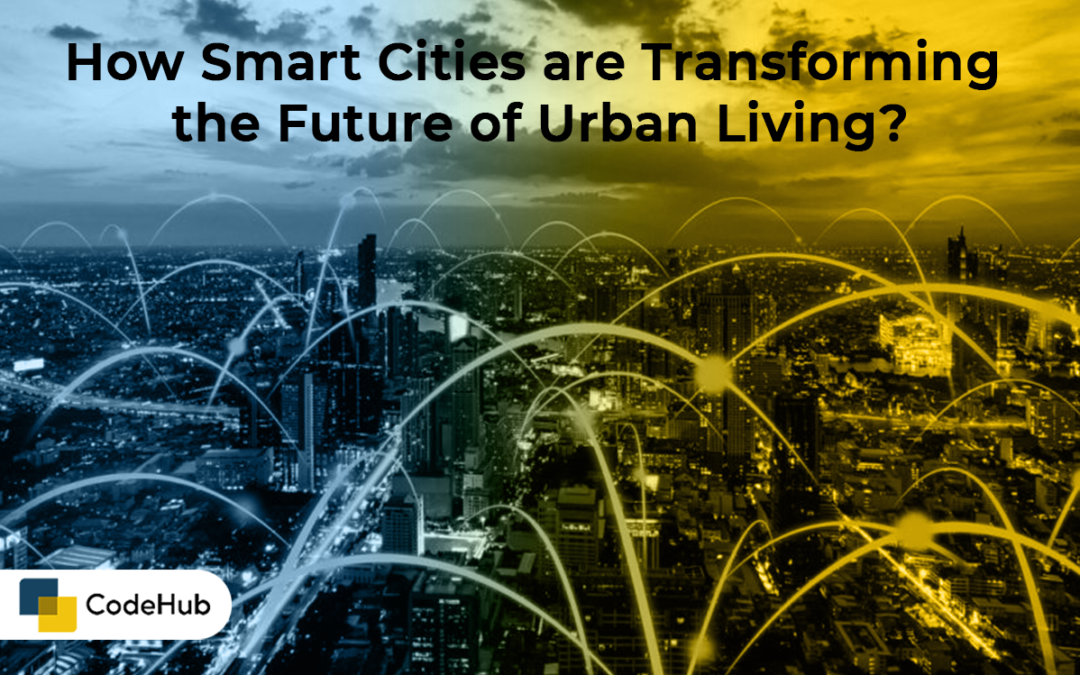Imagine a city where everything is connected, where sensors and data analytics help optimize resources, services, and efficiency. A city where traffic lights adjust to real-time traffic conditions, where waste management is automated and streamlined, where air quality is monitored and improved, where citizens can access public services and information with their smartphones. This is not a sci-fi scenario, but a reality that is already happening in many places around the world. These are smart cities, and they are changing the way we live, work, and play in urban environments.
Smart cities are urban areas that use advanced technologies and data-driven solutions to enhance the quality of life for their inhabitants. These cities leverage technology to optimize resource utilization, streamline services, and improve overall efficiency. Smart cities are not just about using digital technologies for better resource use and less emissions. They also aim to foster social inclusion, civic engagement, innovation, and sustainability.
Some of the benefits of smart cities include:
- Reduced traffic congestion and pollution: Smart cities use intelligent transportation systems (ITS) to monitor and manage traffic flows, reduce accidents, and improve mobility. For example, connected traffic lights receive data from sensors and cars adjusting light cadence and timing to respond to real-time traffic. Connected cars can also communicate with parking meters and electric vehicle (EV) charging docks and direct drivers to the nearest available spot. Smart cities also promote alternative modes of transportation, such as public transit, biking, and walking, by providing integrated and accessible infrastructure and services.
- Improved waste management and recycling: Smart cities use smart garbage cans that automatically send data to waste management companies and schedule pick-up as needed versus a pre-planned schedule. Smart cities also use smart bins that sort and compress waste, reducing the volume and frequency of collection. Smart cities also encourage citizens to recycle more by providing incentives and feedback through gamification and rewards systems.
- Enhanced energy efficiency and sustainability: Smart cities use smart grids that balance energy supply and demand, integrate renewable sources, and reduce losses. Smart cities also use smart meters that allow consumers to monitor and control their energy consumption, as well as participate in demand response programs that offer incentives for reducing or shifting energy use during peak times. Smart cities also use smart buildings that optimize lighting, heating, cooling, ventilation, and security systems based on occupancy, weather, and user preferences.
- Increased public safety and security: Smart cities use smart surveillance systems that use cameras, sensors, facial recognition, and artificial intelligence (AI) to detect and prevent crime, terrorism, and natural disasters. Smart cities also use smart emergency response systems that coordinate police, fire, ambulance, and other agencies to provide faster and more effective assistance. Smart cities also use smart lighting systems that adjust brightness and color based on time of day, activity level, and safety needs.
- Improved public health and well-being: Smart cities use smart health care systems that provide remote diagnosis, treatment, monitoring, and prevention of diseases. Smart cities also use smart wearable devices that track vital signs, fitness levels, and emotional states of individuals. Smart cities also use smart environmental sensors that measure air quality, noise levels, temperature, humidity, and other factors that affect health. Smart cities also use smart urban planning to create green spaces, bike lanes, pedestrian zones, and other features promoting physical activity and social interaction.
These are just some of the examples of how smart cities are transforming the future of urban living. However, smart cities are not without challenges. Some of the issues that need to be addressed include:
- Privacy and security: Smart cities collect massive amounts of data from various sources, which raises concerns about how this data is stored, shared, used, and protected. Smart cities need to ensure that data is collected with consent, anonymized when possible, encrypted when transmitted or stored, used for legitimate purposes only, and safeguarded from unauthorized access or misuse. Smart cities also need to balance the benefits of surveillance with the rights of citizens to privacy.
Equity and inclusion: Smart cities need to ensure that technology is accessible and affordable to all segments of society, regardless of income, education, age, gender, ethnicity, or disability. Smart cities need to avoid creating digital divides or exacerbating existing inequalities. Smart cities need to foster social cohesion and participation among diverse groups of citizens.
- Governance and regulation: Smart cities need to establish clear and transparent rules and policies for the development, deployment, and management of smart technologies and services. Smart cities need to ensure that stakeholders, including government, private sector, civil society, and citizens, are involved in the decision-making process and have a say in how their data is used. Smart cities need to balance innovation and experimentation with accountability and responsibility.
Smart cities are not a one-size-fits-all solution, but a dynamic and evolving concept that adapts to the needs and preferences of each context and community. Smart cities are not an end goal, but a means to an end: a better quality of life for all. Smart cities are not just about technology, but about people.

